Latex vs Mylar Balloons: Which is more prone to popping during handling?
Are your balloons leaving you deflated before the party even starts? Popping balloons can ruin an event and your reputation. Discover which material is the real culprit.
Latex balloons are more prone to popping during handling than Mylar balloons. This is because latex is a natural, stretchy material that can be more susceptible to overinflation, sharp objects, and temperature changes. Mylar, a type of plastic, offers greater puncture resistance and structural integrity.
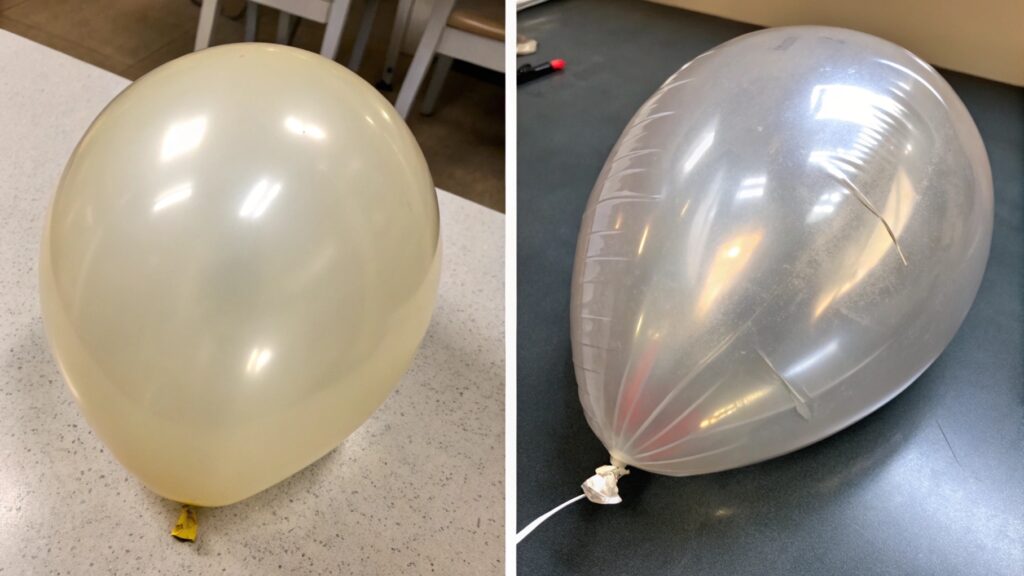
Let's dive into the core differences between these two popular balloon types. We will explore what makes one more resilient during handling and transportation. I've spent years in the balloon industry. I have seen firsthand how material properties play a crucial role in product integrity.
Which type of balloon is more durable for event decorators1: latex or mylar?
Do you dread the sound of an unexpected pop in the middle of a setup? Event decorators need reliable materials that can withstand the rigors of installation. Knowing which balloon type is tougher helps you avoid costly mistakes.
Mylar balloons2 are generally more durable for event decorators than latex balloons3. Mylar's tougher, less elastic material makes it more resistant to punctures and tears during transport, inflation, and arrangement. Latex balloons, while flexible, are more easily compromised by sharp objects or overstretching.
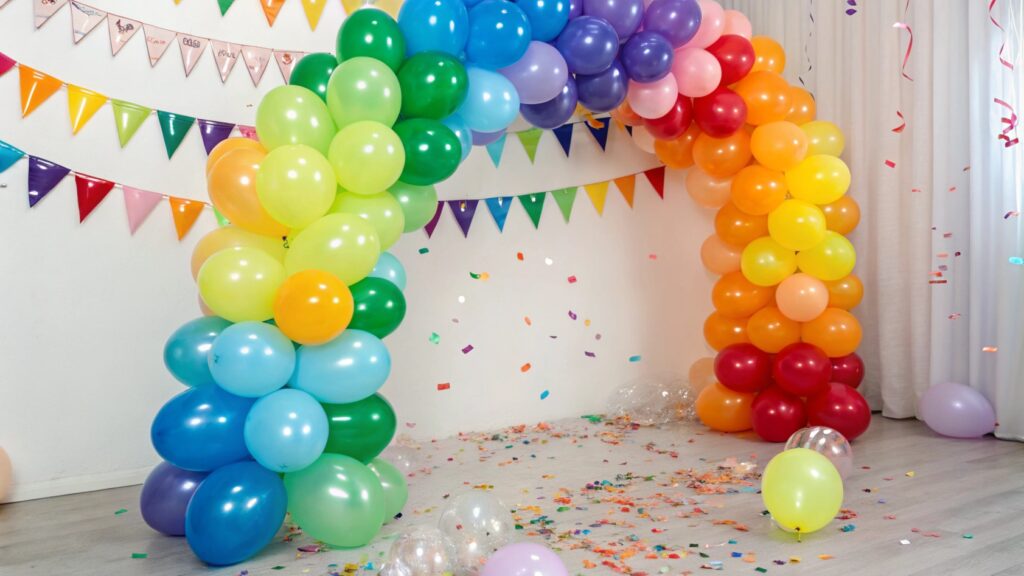
I remember once working on a large-scale installation. We had hundreds of balloons to inflate and arrange. We noticed a significant difference in how the latex and Mylar balloons behaved. The Mylar balloons, with their metallic sheen and solid structure, felt much more robust. They could handle minor bumps and scoffs during setup. The latex balloons, on the other hand, needed more delicate handling. An accidental brush against a rough surface often led to a loud pop. This experience really highlighted the practical durability differences for me.
Understanding Material Differences
The key to durability lies in the material. Latex is a natural rubber. Mylar is a type of stretched polyester film. This difference in composition affects how each balloon reacts to external forces.
| Feature | Latex Balloons | Mylar Balloons |
|---|---|---|
| Material | Natural Rubber | Stretched Polyester Film (Plastic) |
| Elasticity | High | Low |
| Puncture Resist | Low | High |
| Tear Resist | Low | High |
| Flexibility | High, stretches to accommodate air | Low, maintains predefined shape |
| Handling Needs | More careful handling, avoids sharp | Less prone to damage from minor impacts |
| Common Issues | Overinflation, friction, sharp edges | Valve leaks, extreme pressure changes |
Latex balloons stretch when inflated. They become thinner and more vulnerable to punctures. Mylar balloons are made from a non-stretch plastic film. They resist punctures better. This makes Mylar a more forgiving option for busy event decorators. They handle many balloons at once.
Handling and Inflation Considerations
Proper handling and inflation techniques also play a role in durability. For latex balloons, it is important not to overinflate them. This stresses the material. It makes them more likely to pop. Also, keeping them away from direct sunlight or heat sources helps. Heat causes the air inside to expand. This puts more pressure on the balloon. For Mylar balloons, while they are tougher, their valves can be a weak point. It is important to avoid forcing the inflation nozzle too hard vào the valve. This prevents damage. Their rigid structure means they do not expand much. Over-pressurizing them can cause seams to burst. Knowing these nuances helps decorators choose the right balloon type for the job. It ensures their creations last.
For party planners, are latex or mylar balloons riskier for unexpected popping?
Are you tired of unexpected pops ruining the perfect party atmosphere? Party planners work under tight deadlines. They need to minimize mishaps. Understanding which balloon type is more volatile helps you plan with confidence.
Latex balloons are riskier for unexpected popping for party planners than Mylar balloons. Their elastic nature makes them highly susceptible to abrupt changes in pressure, sharp objects, and friction. Mylar balloons hold gas better and are more resistant to external impact, resulting in fewer impromptu bursts.
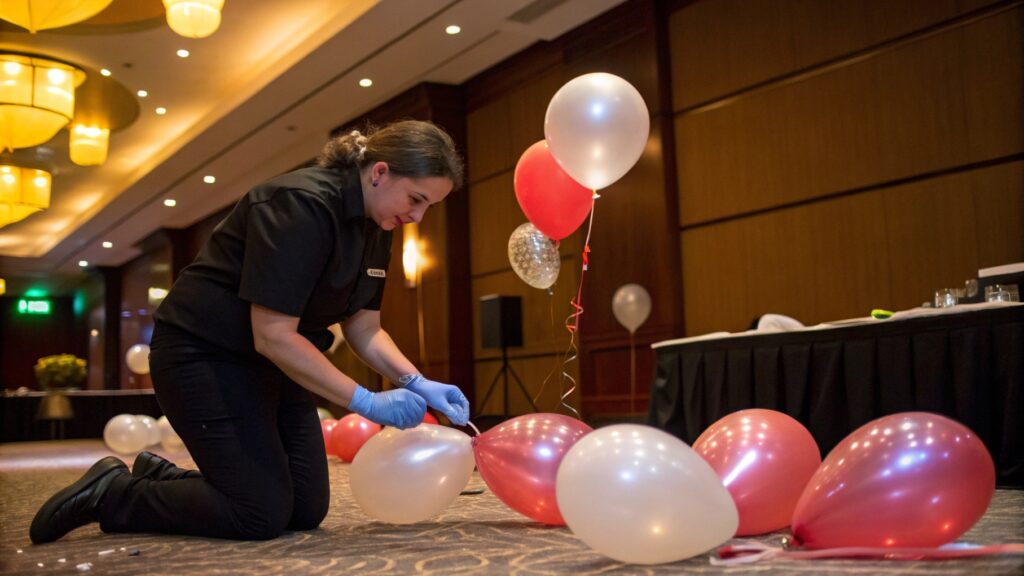
I once organized a children's birthday party. We had a large balloon arch made predominantly of latex balloons. Everything was going well. Then, a quick drop in temperature later in the afternoon caused several of the latex balloons to pop. The sudden change made the air inside contract. This created stress on the stretched latex. It led to bursts. The few Mylar balloons in the arrangement were unaffected. This experience taught me the importance of considering environmental factors4. It showed me how they can impact different balloon materials.
Environmental Factors and Popping
Environmental factors significantly affect balloon integrity. Latex balloons are more sensitive to temperature and pressure changes.
| Environmental Factor | Latex Balloon Impact | Mylar Balloon Impact |
|---|---|---|
| Temperature Changes | High risk of popping due to expansion/contraction | Lower risk, more stable |
| Humidity | Can weaken material, especially in high humidity | Minimal effect |
| Sunlight/UV | Weakens latex, causes premature degradation and popping | Can fade colors but less prone to popping due to UV |
| Sharp Objects | Very high risk of puncture from even small sharp objects | Lower risk, more resistant to minor scrapes or pokes |
| Friction | High risk, especially when rubbing against surfaces | Low risk, smooth surface reduces friction-related pops |
Latex balloons, being permeable, can slowly lose air. This is especially true in dry environments. This can lead to deflation over time. But more importantly, sudden temperature shifts cause the air inside to rapidly expand or contract. This puts immense pressure on the thin latex skin. Mylar balloons, on the other hand, are less prone to these issues. Their non-porous structure and stronger material make them more stable. They hold their shape and gas content better. They are less reactive to environmental fluctuations.
Storage and Transport Considerations
Proper storage and transport are critical for preventing unexpected pops. Latex balloons should be stored in a cool, dark place. They need to be protected from direct sunlight and extreme temperatures. They should also be transported in bags or boxes. This prevents friction and contact with sharp objects. For Mylar balloons, while they are more robust, careful transport is still important. Avoid folding them sharply. This can create creases that weaken the material. Also, ensure their valves are not bent or damaged. This prevents gas leaks. Adhering to these practices minimizes the risk of unexpected popping. It helps party planners deliver flawless events.
Between latex and mylar, which balloon material requires more careful handling to prevent bursting?
Are you wondering which type of balloon demands more of your attention to avoid a premature pop? Careful handling is key in the balloon industry. Knowing which material requires the most gentleness helps you avoid waste.
Latex balloons require significantly more careful handling than Mylar balloons to prevent bursting. Their inherent elasticity and thinner material make them fragile against sharp objects, rough surfaces, and over-inflation. Mylar's plastic composition offers superior strength and resilience.
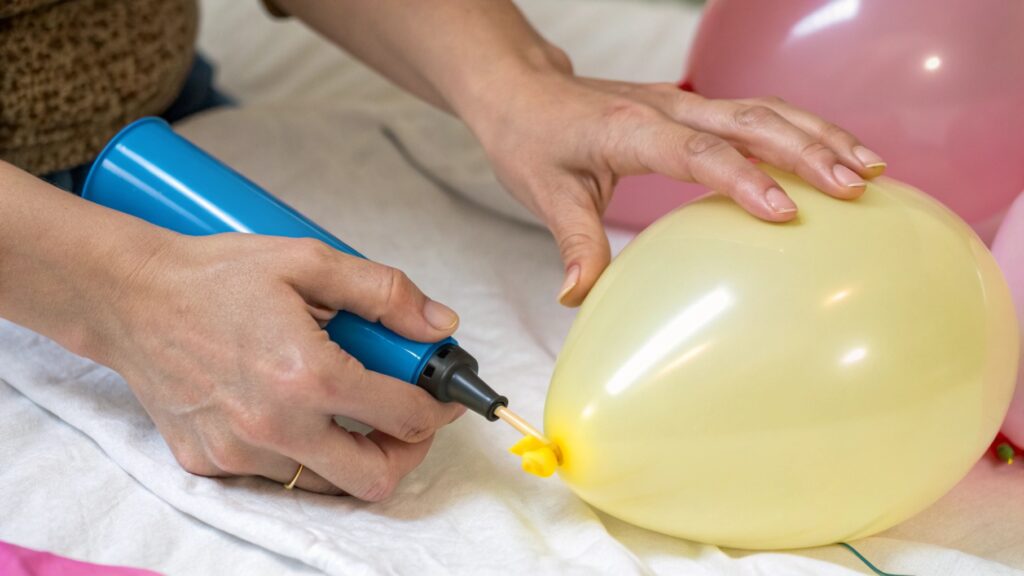
I recall a situation where we were preparing a large order of custom-printed balloons. Many were latex. We learned quickly that even a slight drag across the concrete floor could cause them to pop. We had to implement strict handling protocols. We used specialized hand trucks and soft-lined bins for transport. With the Mylar balloons in the same order, we found them much more forgiving. They could withstand more casual handling without immediate damage. This clear difference emphasized the heightened need for care with latex.
Factors Contributing to Bursting Incidents
Several factors make latex balloons more prone to bursting. Their natural rubber composition, while flexible, is not as puncture-resistant as Mylar.
| Factor | Latex Balloon Vulnerability | Mylar Balloon Vulnerability |
|---|---|---|
| Puncture Risk | High, from sharp objects, rough surfaces, even fingernails | Low, more resistant to minor punctures |
| Abrasion Risk | High, rubbing against surfaces causes friction and heat | Low, smooth surface minimizes friction damage |
| Over-inflation | Very high risk, stretches material beyond its limit | High risk, but material is stronger before bursting |
| Knot Tying | Risk of tearing at the neck if pulled too tight | Not applicable, self-sealing valve |
| Static Electricity | Can attract dust/debris, increasing surface vulnerability | Less affected |
| Oxidation | Over time, latex degrades, increasing burst risk | Very stable, less prone to material degradation |
Latex balloons have a limited stretch capacity. Once they go beyond this, their structural integrity weakens significantly. Even small imperfections in the manufacturing process can create weak spots. These become prone to bursting when inflated. Mylar balloons, being made from a strong plastic film, resist external forces much better. Their seams are usually heat-sealed. This creates a very strong bond. This means they are less likely to burst unless severely over-inflated or deliberately punctured.
Best Practices for Handling Balloons
To minimize bursting, specific handling practices are necessary. For latex balloons, always use a good quality inflator with a pressure gauge. This prevents over-inflation. Avoid contact with anything sharp. This includes jewelry, fingernails, or rough surfaces. Store them away from direct sunlight and extreme temperatures. When tying, use a smooth, consistent motion. This avoids stressing the neck of the balloon. For Mylar balloons, do not force the inflation nozzle too far into the valve. Always inflate slowly. This prevents damage to the self-sealing mechanism. Transport both types of balloons in soft, clean bags. This helps protect them from external damage. Following these guidelines ensures longer-lasting balloons and fewer headaches.
Wholesalers: which balloon, latex or mylar, leads to fewer damage claims from popping during transport or setup?
Are you a wholesaler looking to reduce costly damage claims? Popping balloons during transport or setup can eat into your profits. Knowing which balloon type performs better means fewer returns.
Mylar balloons lead to fewer damage claims from popping during transport or setup compared to latex balloons. Mylar's robust plastic material is far more resistant to the physical stresses of shipping, handling, and installation. Latex balloons are more delicate and prone to bursting from minor impacts or pressure changes.
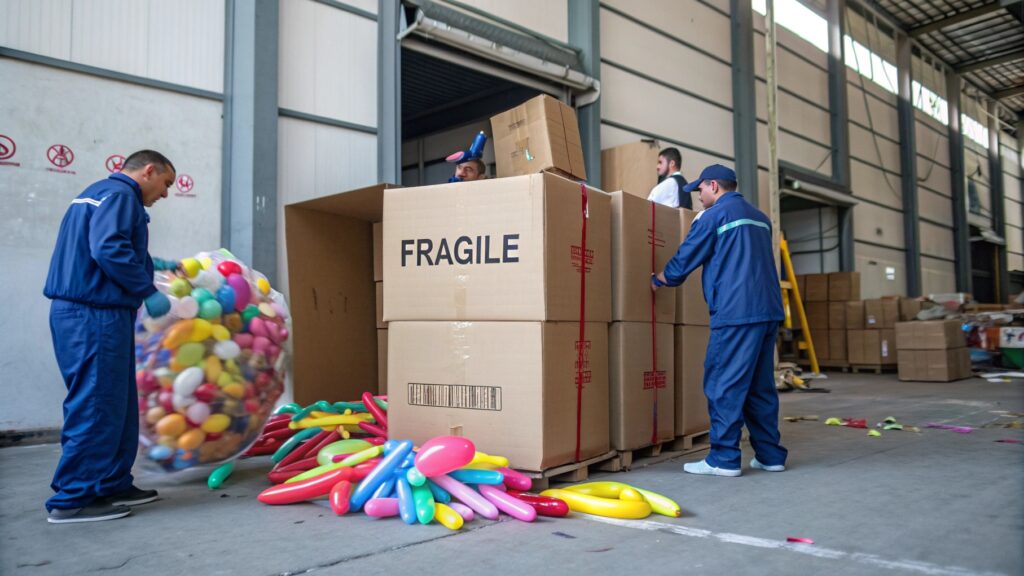
I've been involved in global shipping for AIHUA BALLOON for many years. I've personally overseen countless shipments. We noticed a clear pattern in damage reports. Shipments containing a higher proportion of Mylar balloons consistently had lower damage rates. They arrived intact even after long journeys. The latex balloon shipments, while carefully packed, occasionally had reports of burst balloons. This was due to impacts or pressure changes. This data strongly supported Mylar's superior resilience in transit. It highlighted its lower risk for damage claims.
Packaging and Shipping Strategies
Effective packaging is crucial for preventing damage claims. Especially for delicate items like balloons.
| Packaging Strategy | Latex Balloon Impact | Mylar Balloon Impact |
|---|---|---|
| Outer Carton | Must be sturdy, limits external pressure, prevents crushing | Sturdy, for stacking strength and general protection |
| Inner Packaging | Individual bags, anti-static materials, cushioning | Can be bulk-packed, less need for individual cushioning |
| Void Fill | Crucial, prevents movement, reduces friction & impact | Less critical, but still good to prevent shifting |
| Humidity Control | Important in storage/transit to prevent material degradation | Less sensitive to humidity |
| Temperature Control | Crucial, prevents expansion/contraction, material weakening | Important for preventing extreme pressure changes |
| Handling Labels | "Fragile," "Handle with Care," "This Side Up" | "Fragile," but less critical |
For latex balloons, individual packaging within a larger carton helps protect them from each other and external forces. Using anti-static materials prevents friction-induced pops. Proper void fill ensures the balloons do not shift and rub against the carton walls. Mylar balloons are more forgiving. They can often be packed together with less individual protection. However, preventing sharp creases in their folded state is still important. Clear labeling for all shipments helps carriers understand the need for careful handling. This further reduces the risk of damage.
Quality Assurance and Compliance
For wholesalers, quality assurance5 (QA) and compliance are paramount. At AIHUA BALLOON, we ensure our products meet global safety standards. This starts from sourcing raw materials to the final product passing through rigorous checks. Certifications like Sedex and ISO9001 are not just labels. They represent a commitment to consistent quality. This includes material strength and integrity. For Mylar balloons, quality checks focus on seam integrity and valve functionality. For latex, the elasticity, thickness, and uniformity of the material are key. We provide comprehensive quality reports to our clients. This gives them confidence in our products. It shows our dedication to reducing their damage claims. By focusing on these aspects, wholesalers can offer products that are both high-quality and reliable. This builds trust and reduces overall costs related to damage.
Conclusion
Latex balloons are more prone to popping during handling than Mylar balloons. Their natural, elastic material makes them vulnerable to sharp objects, overinflation, and environmental changes. Mylar, a robust plastic, offers superior puncture resistance and stability. Careful handling and proper storage are vital for both, but especially for latex.
-
Discover key factors that contribute to balloon durability, ensuring your event setup is flawless and stress-free. ↩
-
Explore the benefits of Mylar balloons, including their durability and resistance to punctures, which are crucial for event decorators. ↩
-
Understanding the limitations of latex balloons can help you make informed choices for your event decoration needs. ↩
-
Learning about environmental factors can help you make informed decisions when planning events with balloons, ensuring they last longer. ↩
-
Learn about quality assurance practices that ensure product reliability and safety, crucial for reducing damage claims and building trust with clients. ↩
